by Naomi | Feb 27, 2017 | Book Reviews
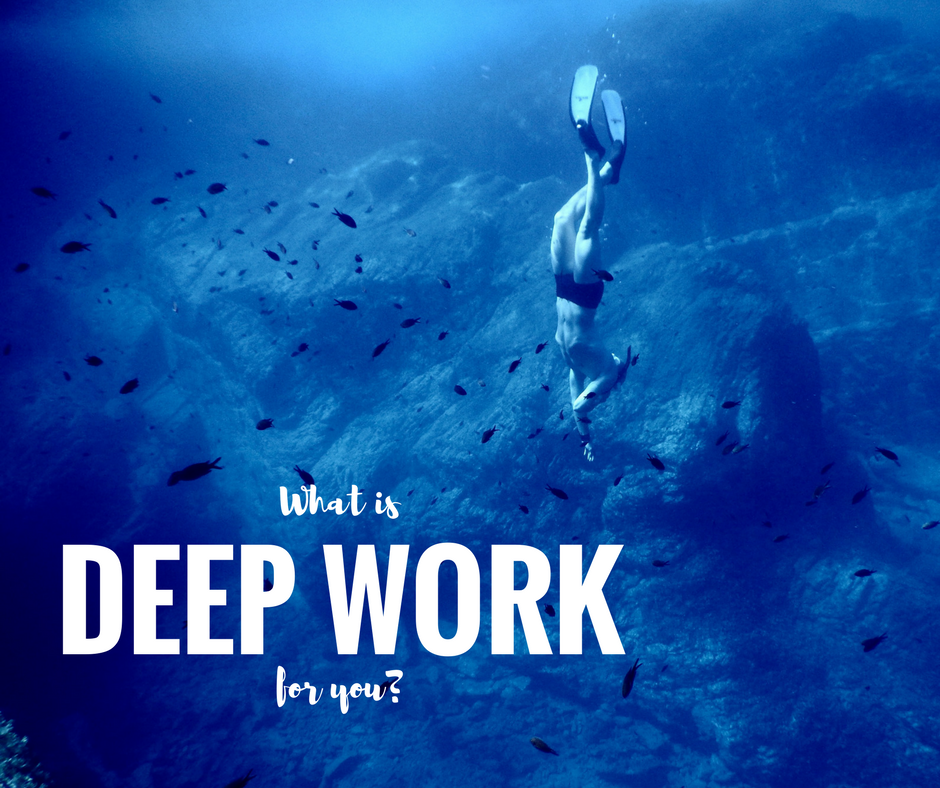
As I’ve been thinking about heart, and how my heart shows up in my work, I picked up Cal Newport’s book: Deep Work.
What I love about this book is that Cal doesn’t simply tell us that we need to focus on the things that matter (a truth that is clear to most of us), but he also discusses what focus looks like, and practical ways to build our mental capacity for focus.
Cal defines deep work as “the ability to focus without distraction on a cognitively demanding task.” Deep Work leads to a sense of joy and meaning in our lives because we learn to focus on what matters and let go of the more shallow concerns that otherwise might consume us.
Deep Work lives to an improved life. Cal says: “Like fingers pointing to the moon, other diverse disciplines from anthropology to education, behavioral economics to family counseling, similarly suggest that the skillful management of attention is the sine qua non of the good life and the key to improving virtually every aspect of your experience.”
He also points out that when we spend our time in our inboxes, we tend to focus on the irritating small issues of life. It isn’t that we shouldn’t pay attention to our community and the things they may need from us, more that we should make sure our best attention goes to those few projects that really tap into the most meaningful use of our unique capabilities.
Cal says, “Who you are, what you think, feel, and do, what you love—is the sum of what you focus on.” When we focus on work that challenges us to work at our highest intellectual capacity, we gain a sense of significance. He points out that most knowledge workers are engaged in vague tasks that yield vague and hard to measure results. No wonder we have a hard time knowing whether what we do matters. By determining what deep work is for us, and by building the mental discipline needed to engage in deep work, we not only are able to give more to the world around us, but are more satisfied, settled and joyful in our lives.
Results well worth working hard for, no?
If you’re exploring how to bring your heart into your work and looking for practical strategies, Deep Work will be a compelling read for you.
by Naomi | Feb 23, 2017 | Creative Life

What is at the heart of my life? How does that relate to what’s at the heart of my work? I’ve been exploring the theme of heart here at the Writerly Play blog these past couple weeks. Like many meaningful questions, I’ve found these two to be both more complex and more simple than they seem at first glance. Essentialism by Greg McKeown takes these questions to a deeper level and challenges me to think hard about what truly matters most.
Take a moment and ask yourself: What’s most important to me?
If you’re anything like me, this exercise turns into a stream of “ands.” This and this, oh, and this … and on and on it goes. Which leads me to ask: What do I get rid of? That’s where the complexity comes in. Nearly all of the items on that “important” list are good things. Many of them are great, meaningful things. Saying no isn’t only difficult, sometimes its even painful.
If saying no is painful, why should we do it?
I first read Essentialism by Greg McKeown a couple years ago. I remember being highly attracted to the idea of less, while also holding tightly to my list of everything that’s important. Sure, I thought. I can let go of that, but not this. Or this. Or this. I made some tough decisions and made some progress, but only on the surface level. I held tight to many things that I now see I could have let go.
Say we are a flashlight and our energy is our light. When we choose to shine our light here and there and everywhere, our progress is bound to be slow. To keep things simple, let’s say we chose to keep track of three objects in the dark forest with our light, rather than five. Now, we’re much more likely to not lose any of them. And if we can choose just the one, straight ahead … so much the better.
Saying no to some things means giving a more whole-hearted yes to others.
If we’re being honest, most of us can’t limit our focus to one thing. We have family and friends, bills to pay, meaningful work to do, and our physical, emotional, spiritual and creative health to consider. However, this reality is all the more reason to be careful about saying yes. Some questions to consider include:
- Is this essential?
- If so, is this essential right now?
- Am I using the right approach, or might I achieve the same outcome in a more effective way?
Learning to focus is a process, not a one-time change.
This week, Donald Miller interviewed Greg McKeown on the Storybrand podcast. I was relieved to hear that even for Greg, Essentialism has been a process. It’s a discipline, a practice, a lifelong pursuit. There’s hope!
Even a brief pause in the frenetic momentum of my life allowed me to see that one project that has dominated my to-do list recently is probably not the highest use of me. While it’s an important project, there is opportunity to involve others in the project and make the work–and the connections that come from the work–more meaningful to a larger group of people.
I was excited to see that Greg put together a 21-day challenge to make the pursuit of Essentialism practical and approachable. As you surely know by now, I love practical strategies! I highly recommend the podcast and the corresponding cheat sheet.
If you do listen to the podcast, I’d love to hear what insights show up for you! I learn so much by viewing creative challenges through alternate perspectives. Feel free to post your thoughts below, or tag me on social media. You can find me on Facebook and Twitter.
Here’s to you and your creative heart!
by Naomi | Feb 20, 2017 | Creative Life
Visit the Writerly Play Attic and work through a step-by-step activity to develop your courage. Never heard of the WP Attic? Learn how Writerly Play thinking strategies supercharge your creativity here.

I used to think fear was a weakness. I thought that maturity meant moving beyond fear. Whenever I felt fear, I switched into doubt-myself mode, consulting everyone around me for advice. If a person appeared fearless, I assumed they were also an expert.
It took me a long time to realize a number of important things:
- Just because someone appears fearless doesn’t mean they are.
- Innovators live outside their comfort zone, which means they face fear on a regular basis.
- Fear isn’t rooted in a lack of knowledge, courage, or capacity.
- If someone doesn’t feel fear now and then, she likely isn’t truly stretching herself.
- When I push into and beyond my fear, I’m doing my job. I’m being a confident, capable leader.
When I was younger, I’d do a small, daring thing and feel slightly smug. Fear? Whatever. I’ve got this. Now, I’ve learned fear comes in many sizes. If I’m a tad anxious about doing a live video session, but I shrug my concern off and go for it, I’ve done a good thing, sure. But pushing past larger-scale fear usually costs more than momentary discomfort.
For instance, now that I’m running a non-profit organization, the stakes are high. If someone asks me, “Are you sure that new program will work?” answering, “Let’s give it our best try,” feels like walking onto a tightrope with no safety net. Taking steps forward means risking relationships, our reputation, and even putting people’s jobs on the line.
It’s important to calculate our risk-taking and to make wise decisions. However, I’ve learned that caution can lead to disaster, too. Too much caution can result in completely missed opportunities.
So, what are the practical steps to take to develop your courage?
1. Identify the challenge. Spend time exploring the actual situation and possible goal.
Here’s an example. Like many artists, I wrestle with how to make a living while staying true to my creative heart. It’s easy to make a snap decision about what I need to do. “If I win the Newberry, I’ll have it made!”
The trouble is, my snap-decision solutions tend to be out of my control and beyond my current reach. They create road-blocks rather than forward momentum. So, instead, what if I ask myself: What is my actual goal? Or, if that question doesn’t yield a helpful answer, I might ask: What might success look like?
Or if all else fails, I might ask myself a series of “why” questions:
“Why do I want to win the Newbery?”
“Because teachers will invite me to visit their classrooms to work with their young writers.”
“Why do I want to work with young writers?”
“Because I want to create meaningful experiences for kids who are like the kid I was …”
“Why else?”
“Because I can make a living being creative and also make a difference in the world.”
And, wha-la! I’ve landed at the heart of things.
2. Focus on a proactive question. Start with the question at the heart of your challenge and brainstorm solutions.
Our brains are like computers. When we put a question in, they go to work to solve the question we’ve asked. If we ask a proactive, expansive question, we are much more likely to end up with a workable solution.
In my case, I’d ask: How can I make a living being creative and also make a difference in the world? In the end, my solution may involve writing Newberry-worthy books and working with young writers. But, the landscape also opens up for other possibilities as well. No matter what, by asking a more open question, I’m more likely to find a solution that will work *right now* to keep me in motion toward those life-long dreams.
3. Choose a solution. Take the time you need to research, ask for advice, and review pros and cons. Then, make a firm decision.
When we’re afraid, we fuss and fret and keep our options open. However, solving a problem by moving in twenty directions won’t yield strong results. When we water down our efforts, we water down our progress. Once you’ve chosen a solution, give it an honest chance. Focus your effort on your plan and boldly go for it.
4. Start. Begin with the first possible action.
By starting with the first possible action, you avoid the procrastination that comes from exploring additional options, researching, fretting, planning, and generally over-preparing. No amount of pre-thinking will keep you from running into unexpected challenges. There is no perfect way to roll out your solution. So, since the process is going to be messy, you might as well start, right?
5. Keep moving. Keep taking the next obvious step, one after the other.
That’s it! This strategy may look straightforward and practical, but it is by no means easy. Expect detours and sink-holes. Be prepared to turn a corner only to run straight into fear yet again. Instead of running, reach out your hand. Invite fear to come along as you *keep moving*.
Many of you are facing your fear as we speak.
You’re pushing forward into the unknown creatively, personally, professionally. If that’s you, I want to say … I’m tremendously excited for you. I can’t wait to see what beautiful things you bring into the world because of your courage and determination. I’m excited for those of you who are about to tackle your fear, too.
I’ll be here, cheering you on, so don’t forget to share your progress with me. Not just the wins, either. I want to hear your story—the ups AND the downs. You can always share with me on the blog, or you can email me and tell me your story. Or, connect with me on Instagram or Twitter. Your story matters.
Here’s to you and your courageous heart.
by Naomi | Feb 16, 2017 | Creative Life
Creativity often shows up at the intersection of various thoughts. Here are three on how heart can show up in our work … what do they spark for you?
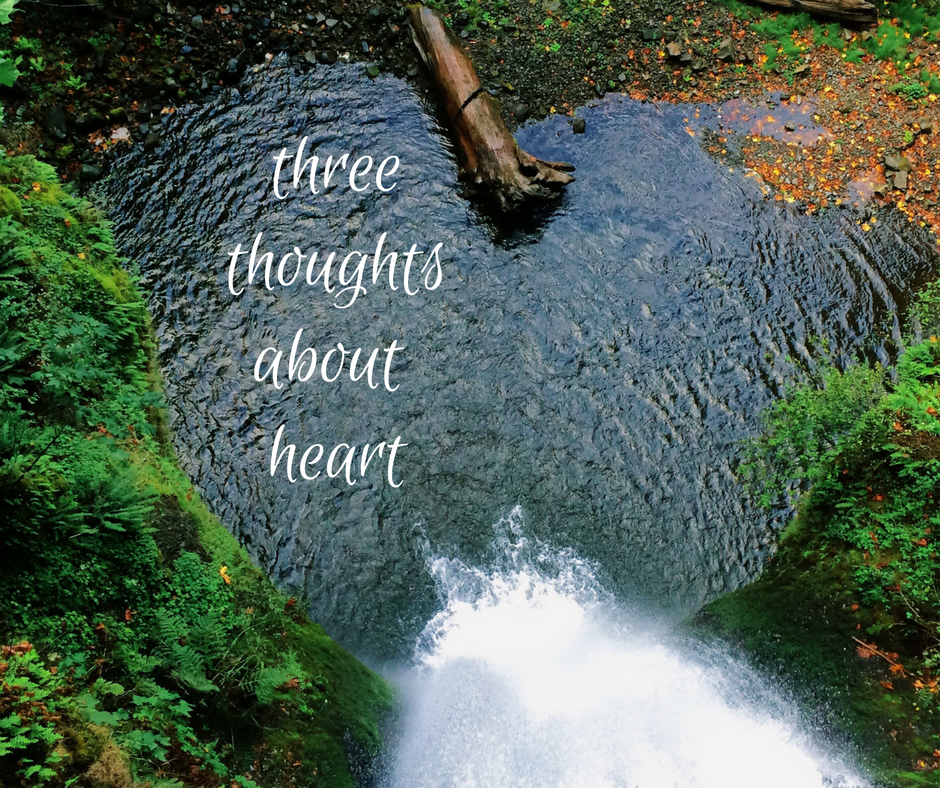
“If I create from the heart, nearly everything works; if from the head, almost nothing.”
– Marc Chagall
“If your heart is a volcano, how shall you expect flowers to bloom?”
– Khalil Gibran
“Find the seed at the bottom of your heart and bring forth a flower.”
– Shigenori Kameoka
by Naomi | Feb 13, 2017 | Writerly Play Activities
Visit the Writerly Play Attic and collect ideas from your life with this creativity sparking activity. Never heard of the WP Attic? Learn how Writerly Play thinking strategies supercharge your creativity here.

One way to move yourself out of a creative funk is to feed your mind fresh images and ideas. Where should you look? Museums are excellent places to encounter ideas and images that you might not seek out otherwise. In a museum, you step into a world curated by someone else. You’re likely to find at least one gem that fuels new thinking.
A quick search of museums in my community includes:
- American Bookbinders Museum
- Cable Car Museum
- Computer History Museum
- Pacific Pinball Museum
I’m sure that immersing myself in any of these worlds would set off creative fireworks for me, particularly because none of these topics is related to my current work.
A quick note: If you decide to go collecting ideas by visiting a new museum, go with an open mind. Rather than forcing connections, allow yourself to be an explorer. If you don’t come away from the experience with a quantifiable new idea, that’s still okay. No matter what, you’ll gain creative energy. The more you allow yourself the play, the more likely it is that an inspired idea will show up.
So, why not take your creativity on a field trip? What museums might you discover in your community? Go check one out and then come back and share. I’d love to hear about your experience!
by Naomi | Feb 9, 2017 | Creative Life
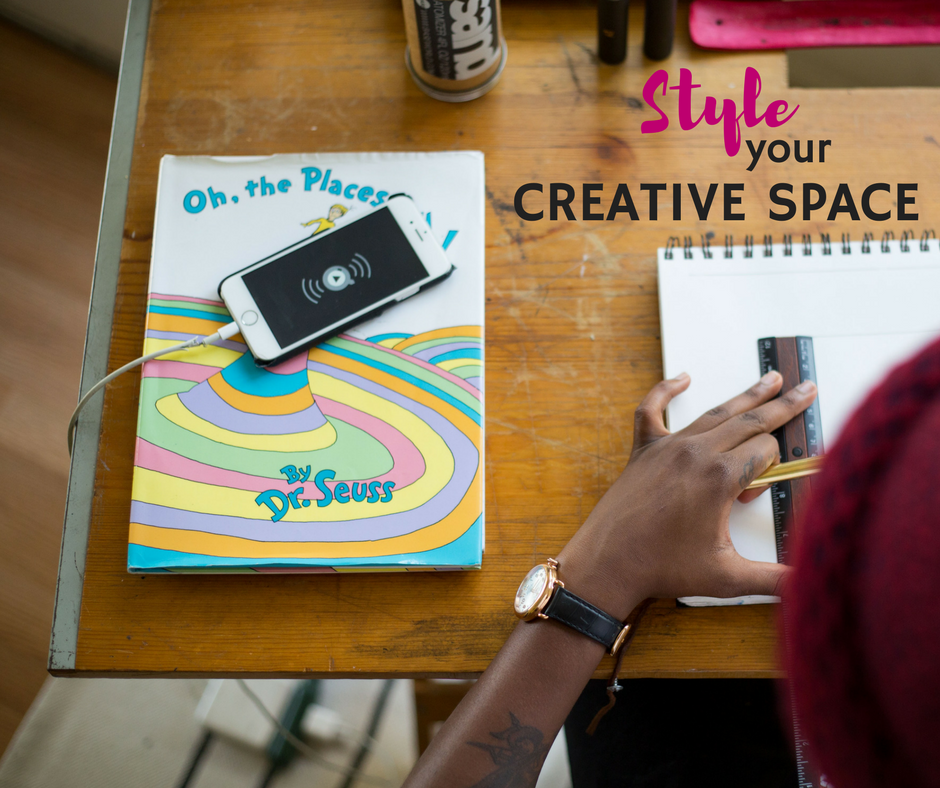
Whether you have an entire room for creative work or just a small corner, the way you feel in your space is what matters most. There’s a reason that Kindergarten classrooms have corners for different kinds of activity. Our space sets a tone. We can set ourselves up for creative success by styling our creative space with a specific feeling in mind.
Step One: Brainstorm
Before getting bogged down in the logistics of your space, think expansively. Ask yourself: How do I want to feel when I sit down to create? List a few adjectives. You may want to think about your overall creativity style and set your space up with your preferences in mind.
Step Two: Consider the Five Senses
Look over your adjectives. What smells, sounds, colors and textures might help you feel those ways? What objects might help you style your creative space to make it work for you?
Step Three: Problem-Solve
Take a look at your actual space. First, what needs to be removed? What problems need to be solved so your space is resistance-free? Keep up your momentum. If you have piles of paper to deal with, stack them in a box or bag, and set them aside. Give yourself a clean slate as quickly as possible without getting sidetracked.
Step Four: Style Your Creative Space
Add details to make your space fit your style. Do you need more color? A scented candle? A fuzzy blanket? Try to use items you already own. Write down any wish-list items to decide on after you’re finished designing your space.
Step Five: Make a Plan
To keep your space resistance-free, you’ll need a plan. Do you need a paper processing inbox somewhere else in the house so that distracting odds and ends don’t end up in this space? Do you need to establish a creative space for each family member so your space doesn’t become the catch-all for everyone’s mess? Do you need a work’s-end ritual to restore your space so that it’s clean and ready for your next session?
Once you’re done, snap a photo and post it on Instagram or Twitter. Tag it #creativespace so we can all take a look and cheer you on!
P.S. Here are some things I added to my space to make it work better for me:
Twinkle lights
A scented candle
Curated playlists (and a bluetooth speaker)
Tool kits for different activities that help me stay organized
A set of colorful Smencils
by Naomi | Feb 6, 2017 | Creative Life
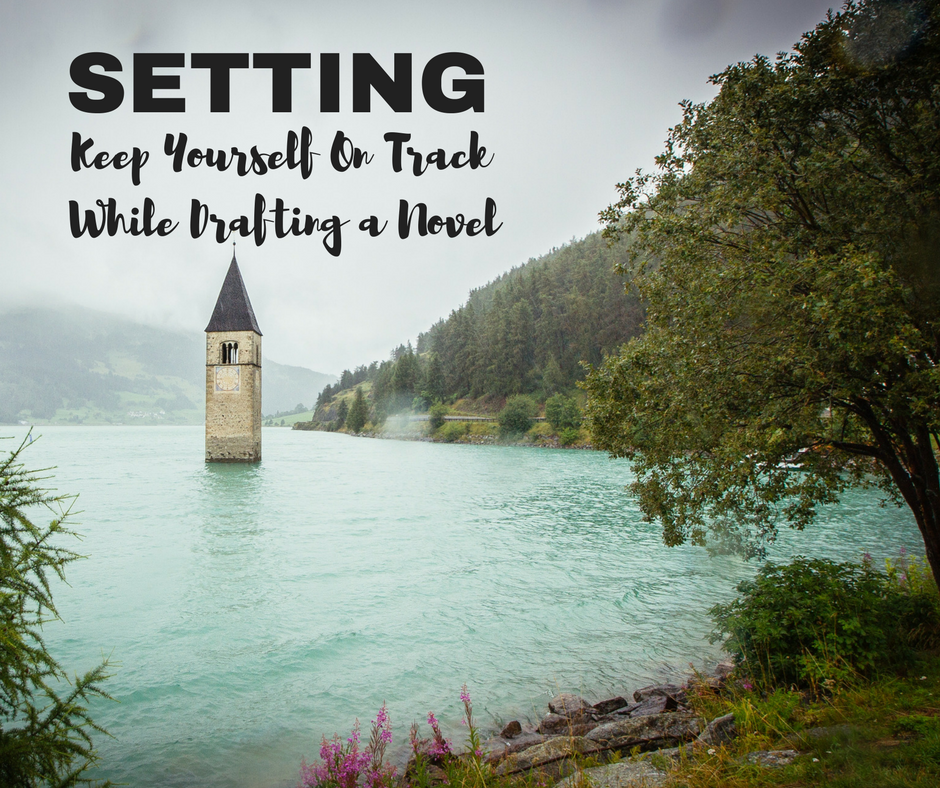
Over the past few years, I felt like I was in writing boot camp. While I sprinted toward due dates for my two middle grade series projects, I hate to admit that I wondered … Do I truly like writing? But now, with hindsight, I see how much I learned by writing within firm parameters and under such tight deadlines. One important lesson I learned was how setting keeps you on track when drafting a novel.
When pressed to write for a deadline, I planned my books with notecards.
For each scene, I made a concrete decision about where each scene would take place and what, specifically, would happen in that location. I asked myself questions such as:
- What is the most interesting (or funny, or mysterious) event that might happen in this location?
- While that interesting event is happening, how might I add depth or dynamics that will move my character’s emotional arc forward?
These setting-based questions sound obvious to the theatre director in me. When I’m directing a show, I consider scenes in layers. First, we start with the dialogue. Let’s say it’s an argument. Then, we look at the setting, brainstorm the action (beyond the argument) and play the scene so the action provides interest, subtext and emotional opportunities for the actors.
Novels offer us the opportunity to slip inside a character’s mind.
It’s a heady power to glimpse another person’s thoughts. Maybe that’s why it’s so tempting to focus on how a character thinks and feels when drafting rather than on action. Rather than choosing a setting intentionally, we might:
- Set a scene in the next obvious place, without considering what location might offer more interesting action.
- Choose the most obvious action in a setting, such as cooking dinner in the kitchen, rather than playing with possibilities.
- Write a moony scene where our character wanders through a magical forest, noticing the glowing trees and intriguing bell-like bird song, without encountering any actual danger, surprise, or well, magic.
When I returned to my more usual writing process, one without a deadline or strict parameters, I found myself adrift. I asked myself, “Why do I feel lost? What’s different from the series books?”
I realized that the notecards hadn’t simply been a shortcut to construct a loose, working plot. They’d been an important tool to help me:
- identify the best possible setting for each scene
- brainstorm humor, action and complications
AND, possibly most importantly, the notecards helped me break the story into pieces.
When I draft a novel, it feels like diving into the ocean.
Anything is possible. I’m most personally engaged and excited when I don’t know what decisions my character will make along the way. Part of what compels me to write the book is the unknown. I want to journey alongside my character. The trouble is, when you’re in the middle of the ocean, you simply have to deal with the waves as they crash over you. Unless you wash up on an island, you can’t rise above your immediate situation to see the big-picture view.
If you don’t have the big-picture view, you:
- make split-second decisions rather than considering the possibilities
- can easily end up in an undertow and be pulled off course
- lose track of the destination and become discouraged
Which do we need: a clear plan for our settings or a plot?
In my opinion, we need a blend of both. Index cards that define setting and action provide needed structure to the drafting process. Unlike a more formal plot, they do not remove the writer’s ability to improvise as he or she writes. I think of the cards like the words tossed out during an improv show. “In the chemistry lab, with a peanut butter and jelly sandwich!” By brainstorming the locations and actions ahead of time, I’m giving myself the bird’s eye view I can’t have when I’m tumbling in the waves.
Plus, I always give myself permission to change my mind. Most of the time, I’m grateful for the inventive idea that I’ve prepared for myself. If I have a better one in the moment, though, all the better! At least, I avoid writing a series of uninspired scenes where all my character does is think.
How does setting keep you on track when drafting a novel?
It’s nearly impossible to answer the question, “When will you finish your draft?” if you don’t know the scope of your novel. What I’ve learned (and relearned the hard way) is that when I don’t have a deadline or a concrete finish-by date, my draft might take years to complete. Index cards help me move through the draft by breaking the novel into manageable pieces. Rather than thinking about the whole book, I can think about how to create a self-contained scene, in a specific setting, and then move on to the next.
The power of this specificity is easy to overlook. The ability to complete a draft is nearly entirely a battle of mind over fingers. If you can track your progress, you reduce much of the resistance that shows up in the middle of the process. “I’m not making any progress!” You’ll see that either:
a. You’re not doing the work
OR
b. You ARE making progress, and all you have to do is to make it to the end of this scene to check off another box.
That string of mini-successes leads to the ultimate success of having a draft. And once you have your draft, you have the raw material from which your novel can be revised and crafted.
Use settings to keep your novel on track.
- Start with a stack of notecards. Choose a setting and brainstorm the action that might happen in your first scene.
- Ask yourself: Where else might this happen? What action might add humor, suspense, interest, complication?
- Choose your setting and action, and then move forward in the story.
- When you get stuck, jump ahead and nail down a future scene.
- Then, go back and build a path to fill in the gap. How might your character move from here to there?
- Give yourself room to write down options that won’t ultimately work. Keep the process loose. Ask questions such as, “Where might this scene take place?” rather than “Where WILL this scene take place?”
- Once you’re done, lay out your story where you can see the full plan. Walk away, and give the ideas space. Then, return and ask yourself, “Is this the most interesting location for this scene? Is this the most interesting action?”
- Revise your plan.
- Give yourself a finite amount of time for the brainstorming process. Ideally, force yourself to complete the work in a week. Then, you can keep up your momentum, and also keep the plan loose enough that you’ll be willing to change your mind mid-draft, as needed.
- Set a reasonable pace for yourself. How many scenes can you draft in a week? Stack up your notecards, and then tackle that novel, scene by scene.
I’m going to get to work on my notecards for my WIP this week. If you try this strategy out, I’d love to hear how it works for you. Try it out and then come back and let us know. Or share with me on Facebook or Twitter. I always love to hear from you.
by Naomi | Feb 3, 2017 | Creative Life
Creativity often shows up at the intersection of various thoughts. Here are three on a sense of place … what do they spark for you?
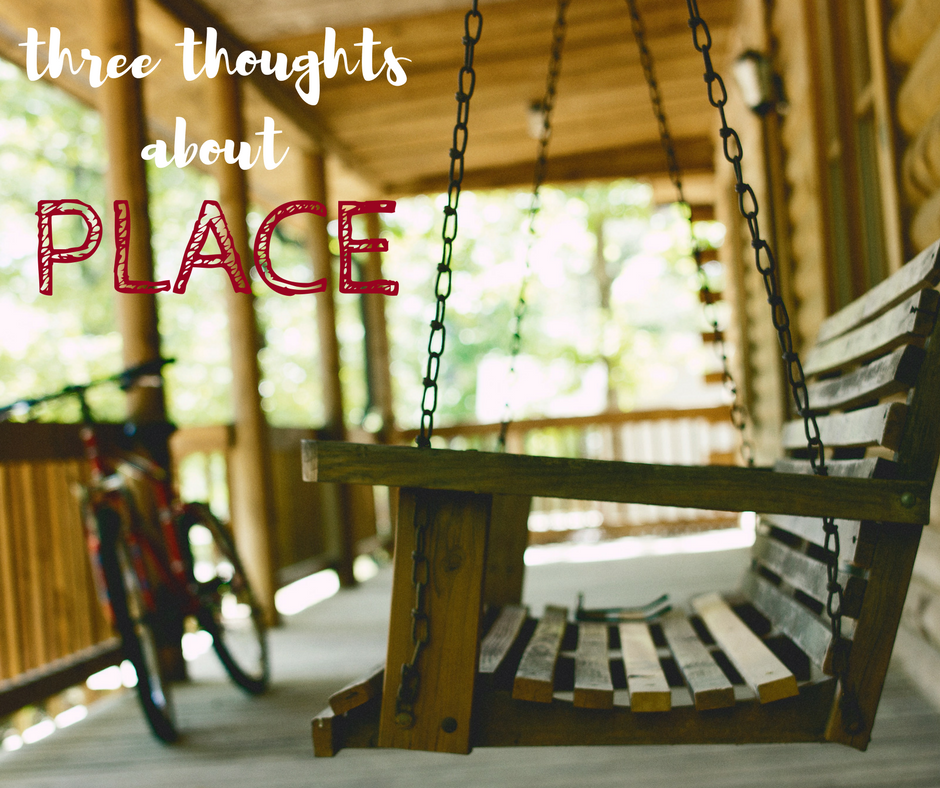
“It does not do to leave a live dragon out of your calculations, if you live near him.”
― J.R.R. Tolkien, The Hobbit
“We shall not cease from exploration, and the end of all our exploring will be to arrive where we started and know the place for the first time.”
―T. S. Eliot
“I grew up in this town, my poetry was born between the hill and the river, it took its voice from the rain, and like the timber, it steeped itself in the forests. “
―Pablo Neruda
by Naomi | Jan 30, 2017 | Writerly Play Activities
Visit the Writerly Play Studio and tap into divergent thinking with this Productivity Playlists activity. Never heard of the WP Studio? Learn how Writerly Play thinking strategies supercharge your creativity here.
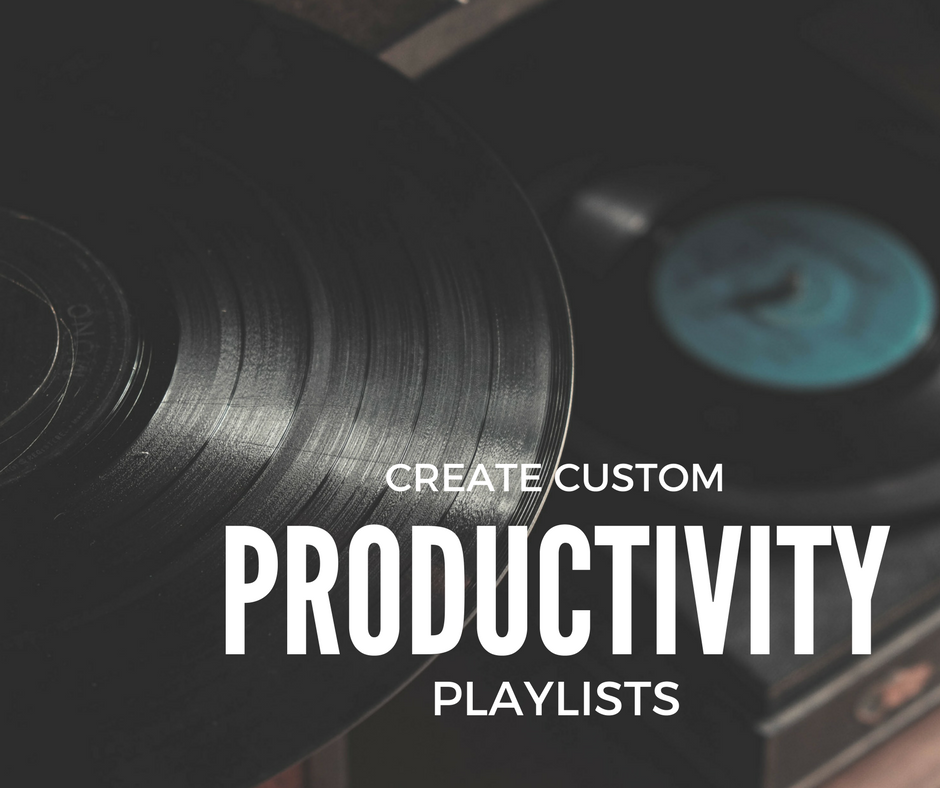
Everybody loves a shortcut.
A playlist is not only fun to make. It’s also a creativity shortcut. Why? Sound provides a doorway into mental spaces that are shaped by your memories, your emotions and your internal rhythm. We don’t have to dig into scientific tomes to know this is true. We’ve had the experience of encountering a song we haven’t heard for years and been transported back in time, sometimes so vividly that we can even smell a remembered place.
If you’re interested in the science of how music affects your brain, here is a video you might enjoy: How Music Affects Your Brain
Music is a powerful tool.
That’s why it’s important to use it strategically. For instance, you don’t want to be distracted from today’s tasks with unrelated blasts from the past. That’s why a productivity playlist is an excellent solution. If you curate music for specific tasks, rather than being distracted, you’re transported into the exact environment you need.
A caveat: There is definitely some research out there that points to silence as the best soundtrack for deeply focused thinking. You may find that playing a short song or two before a creative session is actually the most productive use of playlists for you. In any case, there are likely tasks that will flow better with music, and others that will not. The only one who can determine what works best for you is YOU!
Create your Productivity Playlists:
- Brainstorm two or three types of thinking you need to do in your day. Maybe you’re working on a novel or a screenplay. Maybe there’s a part of your day when you want to keep up your momentum and move quickly through email. Maybe you need to spend part of your day on detail-rich tasks, such as spreadsheets or on the back end of WordPress.
- For each thinking mode, ask yourself: What mood matches this task? List two-five adjectives. Think beyond emotion into sensory feelings. You might even ask yourself: If this task had a genre, what would it be?
- With your adjectives in mind, head to your favorite music source to create your playlists. Here’s an article with some fantastic tips for choosing the right music for your perfect playlist. Music for Optimal Productivity
- Test out your playlists and revise them as you go. Beware of over-optimizing your playlists before you even put them to use. (Over-optimization is fancy procrastination!) You’ll know what isn’t working when trouble shows up. You can fix problems as you go.
That’s it! Go try it out, and then come on back and let me know how this strategy works for you. Share your comments below.
P.S. Need a shortcut for your shortcut? Here’s some ready-made curated playlists for specific purposes.
P.P.S. While we’re on the topic of playlists, here’s an powerful post from Mandy Davis on playlists as a tool to work through grief. Absolutely worth a read.
by Naomi | Jan 23, 2017 | Creative Life
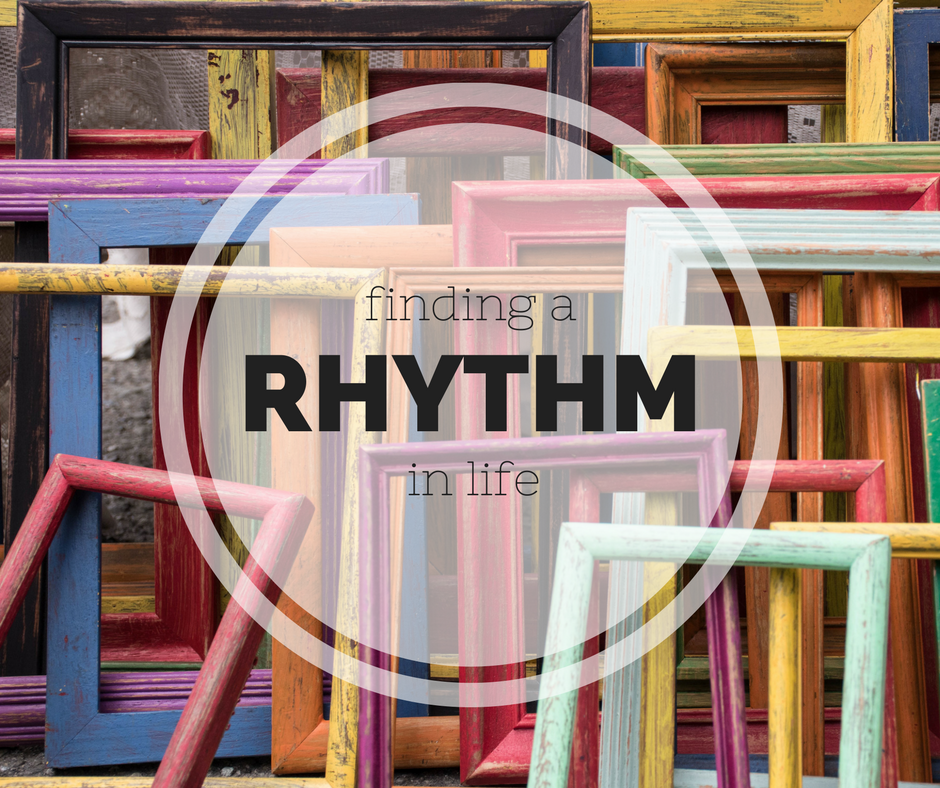
Why is finding a rhythm in life so challenging? At the beginning of the year, many of us re-shuffle our plans to create more clarity and ease in our lives, but within weeks (if not days) we find ourselves out of step again.
Why do we lose our life’s rhythm?
For many reasons. Exciting ones such as:
- We encounter exciting new opportunities.
- Success changes our circumstances and routines.
- Life’s surprises show up.
And frustrating ones such as:
- We run into unexpected challenges.
- Our plans don’t match up with others’ plans.
- We want to make everyone happy.
- We started out with impossible expectations for ourselves.
- In the moment, we make decisions that clash with our big-picture hopes and dreams.
We resist establishing a rhythm to our routine because we know one or all of these (good and bad) things will happen. The dissonance between the routine we desire and the life we’re living is unsettling. We’re living an out-of-sync song.
Is finding a rhythm in life possible?
Rhythm is never static. In music, we establish a downbeat and play from there. Even though we may speed up or slow down, subdivide or syncopate, the downbeat provides the foundation for the song. In this way, life’s rhythm is also fluid, but essential. Without a strong downbeat, we can’t help but get lost. We all experience surprises, challenges and detours, but if we’ve established a norm, we can measure our distance from that norm. We can find our way back.
What does rhythm in life look like?
I don’t know about you, but when I decide I need to do more of something–say working out–any time I’m not doing that thing, I feel guilty. The trouble is, at any given time I have five to ten items on my “I need to do more of that” list. For a long time, I allowed myself to feel guilty much of the time. It wasn’t an overwhelming, devour-my-world guilt. It was a low-level guilt, like a headache you don’t notice until it goes away. Even though it wasn’t overwhelming, my guilt distracted me. I’d be in the middle of writing a new chapter in my novel and think, “Oooh, I should go for a run.”
To me, rhythm in life looks like a clear agreement with myself. This agreement helps me dismiss distracting thoughts. I know how often I’ll go for a run, and generally, when my exercise sessions fit into my week. By creating a structure, I know when I’m deviating from my plan. I can still say yes to surprises, because I know what I’ll need to reschedule in order to make my “yes” possible. Also, the structure provides me with a clear understanding of when I actually AM breaking my commitments to myself. Establishing a rhythm takes up-front effort, but it has made all the difference in my overall focus and momentum.
The benefits of finding a rhythm in life
Life ebbs and flows. When we try to close our eyes and block out everything but our plans, we miss many joyful surprises. And yet, if we fly by the seat of our pants for too long, our big dreams can hover just out of reach. Finding a rhythm in life makes room for what’s actually true. No two days are alike. No plan is followed exactly to the letter. When we dance within that reality, we find momentum AND freedom.
Convinced? Want to try it out for yourself? In case you need a jump-start, I’ve created a Step-by-Step Guide to walk you through the process I used when establishing my own rhythm.











